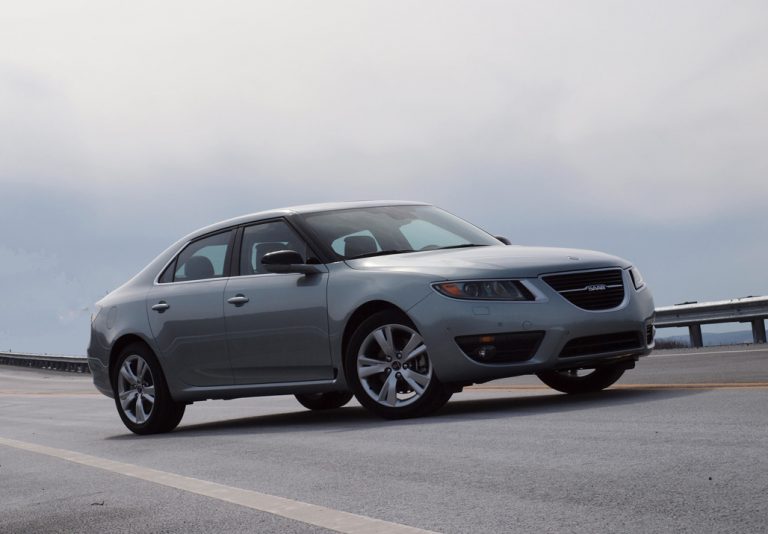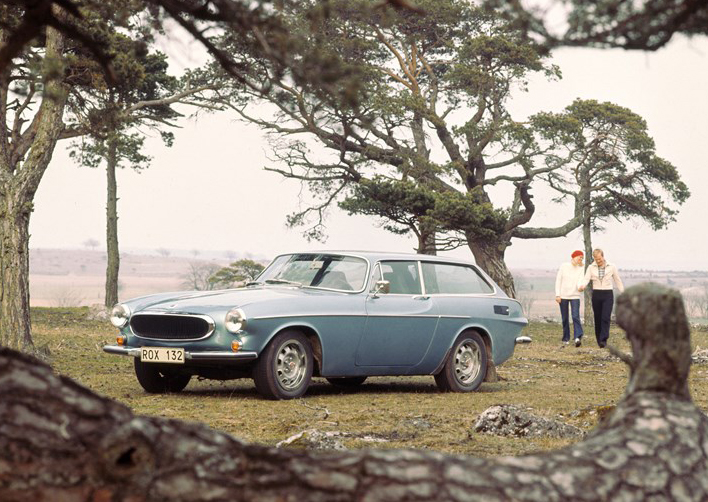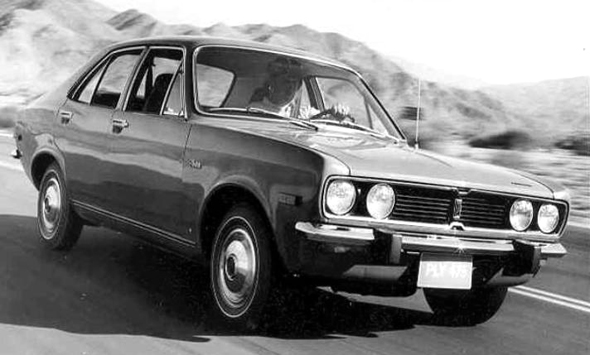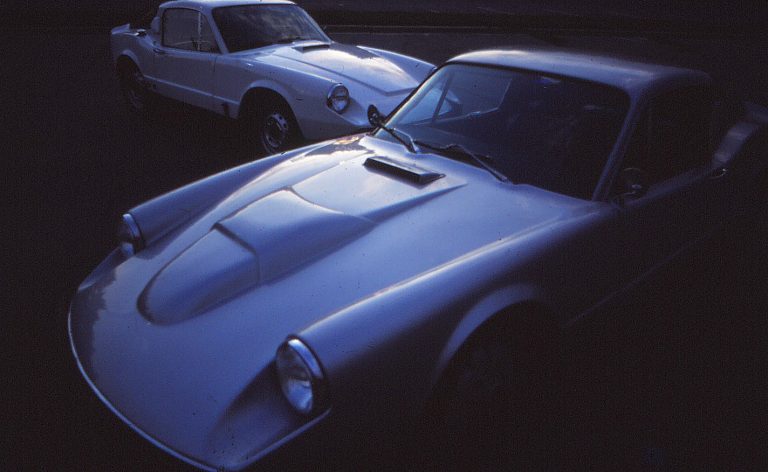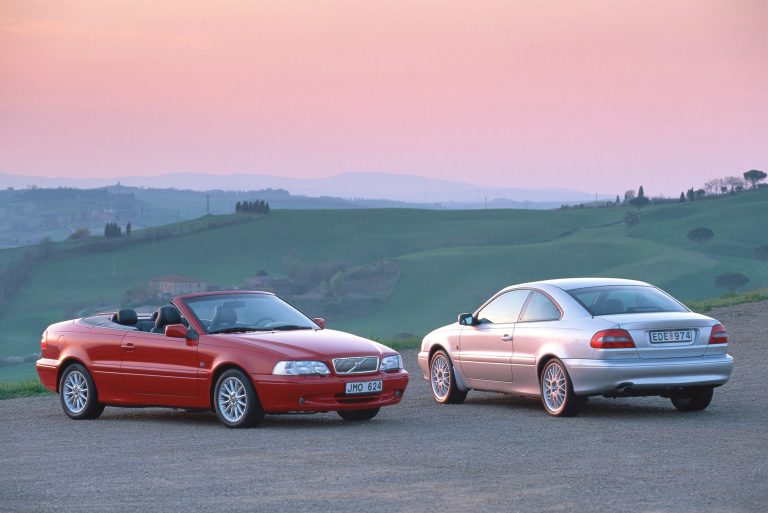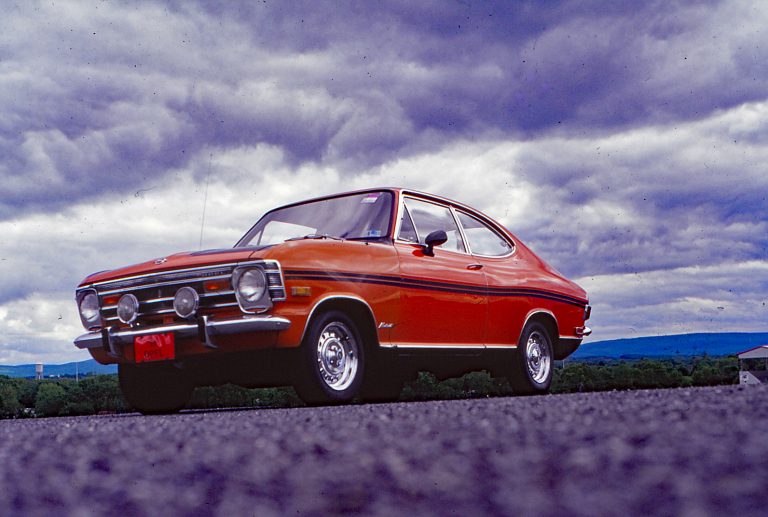History/driving impressions originally published in AutoWeek August 23, 1993
Whirring like an Evinrude, the little Saab gathers up velocity hand over hand. There’s no tachometer, so shift points come by ear. The column-mounted lever moves with typical reluctance, shafts and levers falling into place. Up, forward and up, first gear slides into second. Down on the throttle and the 25 horse, two-stroke two-cylinder engine reverts from popping to that earnest whir again. Shift once more and it’s high gear. With every revolution, two pistons push 764 cc of spent pre-mix into the Swedish evening air. The 1950 Saab 92, fresh from the Saab Bilmuseum, trails a telltale blue plume in its wake.
This was an early Saab automobile, production car number 192. Its two-cycle engine, with oil added to the fuel for engine lubrication, may have been crude, but as such it was also simple. There were a mere seven moving parts: fewer to break and, just as important, fewer to make. For company making his first car, that was crucial.
Saab wasn’t only a novice carmaker, however. The company, Svenska Aeroplan Aktiebolaget, or SAAB, had been around only since 1937, a reaction to the events to the south, and action to assure that in the likelihood of war Sweden’s cherished neutrality and freedoms would be preserved, by force or the threat of it. Saab would supply military aircraft to the Royal Swedish Air Force at a time when other countries, hurriedly arming themselves, could not.
Indeed Sweden, unlike less militarily prepared Norway and Finland, remained neutral in World War II. The approaching peace held problems, though, for the fledgling Saab. Postwar production of military aircraft would not keep its workforce busy. Nor might that of the Saab 90 Scandia, a twin-engined airliner, and the Saab 91 Safira single-engined light aircraft, civil aircraft projects begun in 1944. Prefabricated steel buildings and household appliances were too dull. Scania-Vabis and Volvo had the lucrative truck market locked up, and the motorcycle market was spoken for as well. With Volvo in the upper end of the car market, perhaps there was room for a “Svenska” small car.
Saab began development Project 92, its third civilian project, in 1945. It’s not surprising that the company’s engineers settled on front-drive and a transverse two-stroke twin, like the popular prewar DKW. The prototype, in fact, use the drivetrain from a scrapped DKW. But Saab did more than copy the old design. Instead of DKW’s non-synchro gearbox positioned behind the engine and driven via chain, Saab would place engine and transmission side-by-side, with synchro on the top two of his three speeds.
The carburetor was a single downdraft Solex 32AIC, the engine using crankcase charging with transfer ports and slightly concave (rather than deflector-topped) pistons. A muffler was positioned in front of the engine, the exhaust pipe bending under and back along the right side of the car, with no rear resonator like many early Saabs had. The radiator, too, was aft and above the engine, with thermo-siphon cooling.
All engine and transmission bearings were of roller type except the wristpins’ and reverse shaft’s, freewheeling to prevent damage from a lack of lubrication when the throttle was closed on long downhill runs. Steering was rack and pinion, and eight-inch Lockheed hydraulic drum brakes were used at each wheel. Suspension was fully independent, with double leading arms (VW Beetle turned around) and by single trailing arm at the rear, each end sprung by torsion bars. Tires were 5.00×15 on 3.5-inch-wide rims.
Unlike prewar DKWs, boxy and conventional, the new Saab would be light and aerodynamic, exactly what might be expected from aero engineers. With even a smooth belly pan, the production car would have a Cd between 0.32 and 0.34 and a curb weight of 1936 pounds. The entire roof, from windshield top to rear bumper, was a single stamping. Eliminating the trunk lid saved weight and manufacturing costs, even if loading the trunk through the rear seat was less than convenient.
Once through the two rear-hinged doors, there was room for four adults, two when the seats were converted to beds (though with no room left for luggage).
From first prototype to first production, the Saab 92 was homely. However, as one designer noted, “If its shape can save 100 liters of petrol per year, it doesn’t matter if it looks like a frog.”
The amphibian appearance was abetted by all the early cars being a dark military green. Nevertheless, Saab sold every 92 it could make to a car hungry Sweden, exactly 1,246 in 1950, limited by resources and government controls. The total would reach 5,300 by mid-1952.
In December of that year the 92B appeared, with luxuries including full-width bumpers, larger rear window, external trunk lid, headlamps with integral parking lamps replacing the sealed beams (later illegal in Sweden) and tiny parking lamps. And more power, up to 28 hp, a 12-percent increase. Colors other than green, which began to appear on late 92s, were expanded.
Despite several bouts of negotiations, the Saab 92 was never officially exported to the United States, though the three-cylinder 93 debuted at the 1956 New York Auto Show. The 93 had a claimed top speed of 65 MPH. But more important was a 30-year production run. There would be special rally versions, the two-stroke motors would be replaced by a four-stroke V4 and a wagon variant would be offered.
The last Saab 96 offered in 1980, though changed in virtually every way from that first Saab 92 of 1950, is immediately recognizable as an evolution of the original. Saab proved to have a future in aircraft building (the Saab 2000 commuter airliner and Saab JAS39 Griffin fighter are just beginning production) but that whirring Saab 92 was the bridge to automobile production.
I was flattered by Saab PR staff when we basically snuck the Saab 92 away from the display so I could drive and photograph it. I was the only journalist accorded the honor, so perhaps that had to do with the sneaking. Did the Saab Bilmuseum (“automobile museum”) staff know? I don’t know. I do know that it was a rare experience.
I was also blessed, even if Saab wasn’t, with a drive of one of the very last Saabs made, the Saab 9-5 that would (it was hoped) save Saab. Unfortunately, it was too late, not for me, but for Saab.



